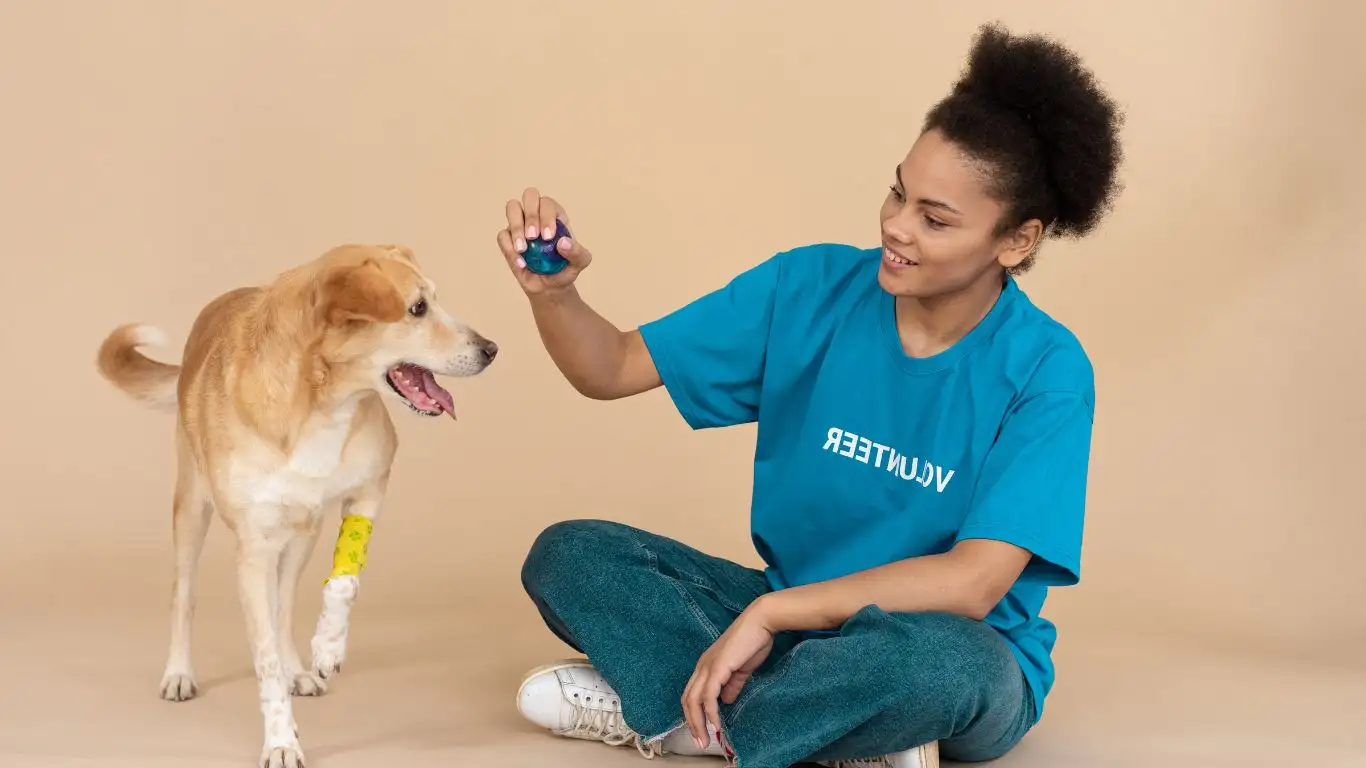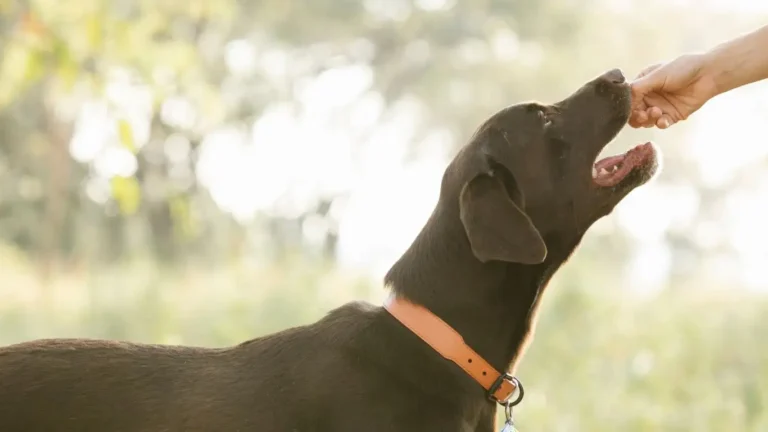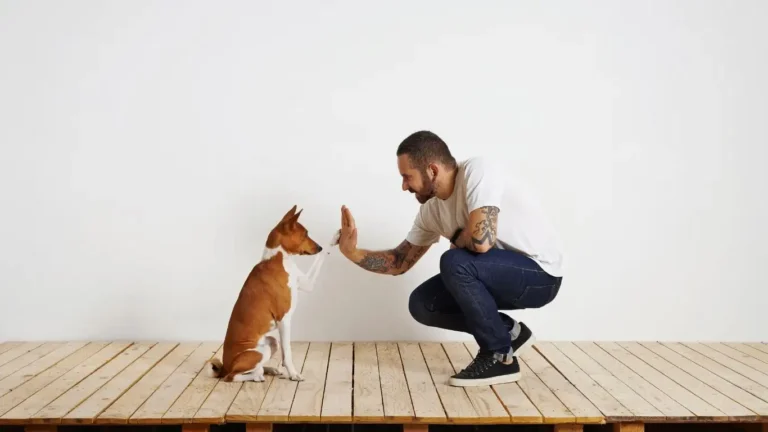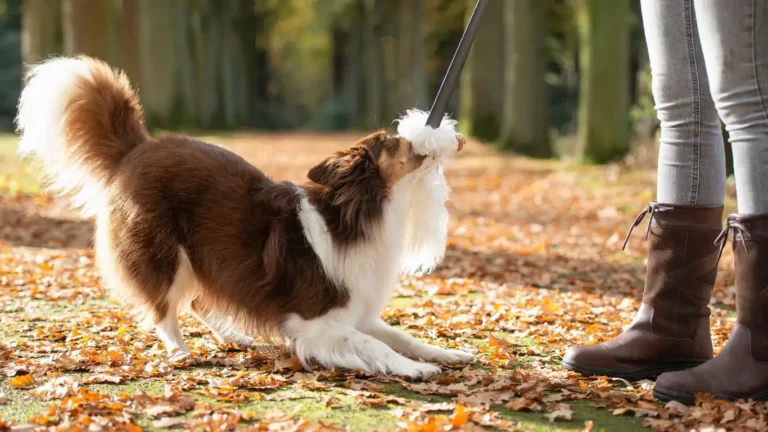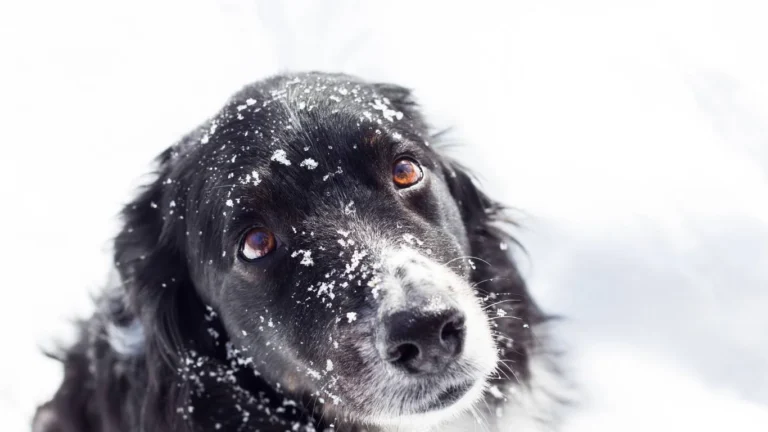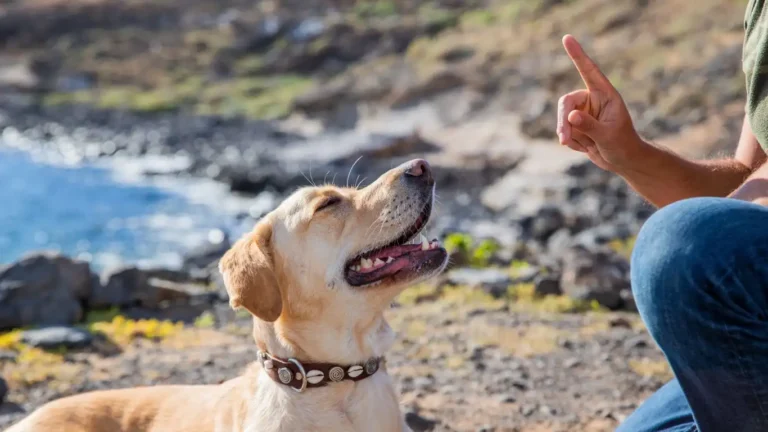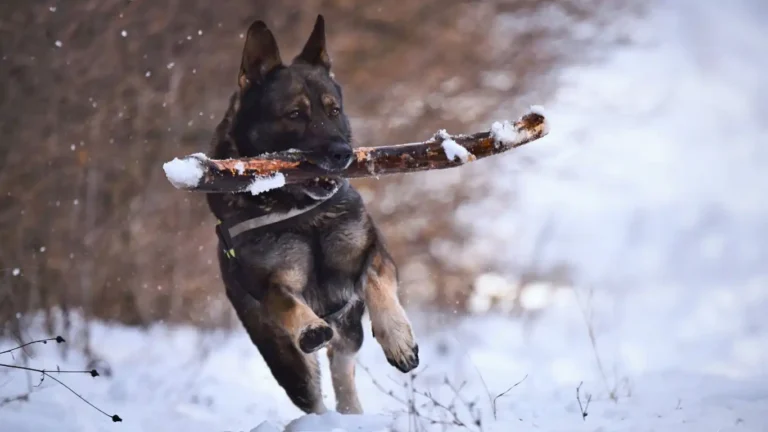Master the Art of How to Train a Dog to Stay Calm When Meeting New Dogs
Ever been on one of those walks where you’re just trying to enjoy the sunshine, but your dog turns into a barking, lunging maniac the moment another pup shows up? You’re definitely not alone. One of the top things I get asked in sessions is how to train a dog to stay calm when meeting new dogs. It’s such a common struggle—and honestly, I’ve been there too. Back when I was training my first therapy dog, Cooper, he used to go from zero to chaos just seeing another tail wag across the park. What I’ve learned through years of real-world experience (and a whole lot of trial and error) is that calm greetings don’t just magically happen—they’re trained, slowly, intentionally, and with a good sense of humor.
Understanding Why Dogs React in the First Place
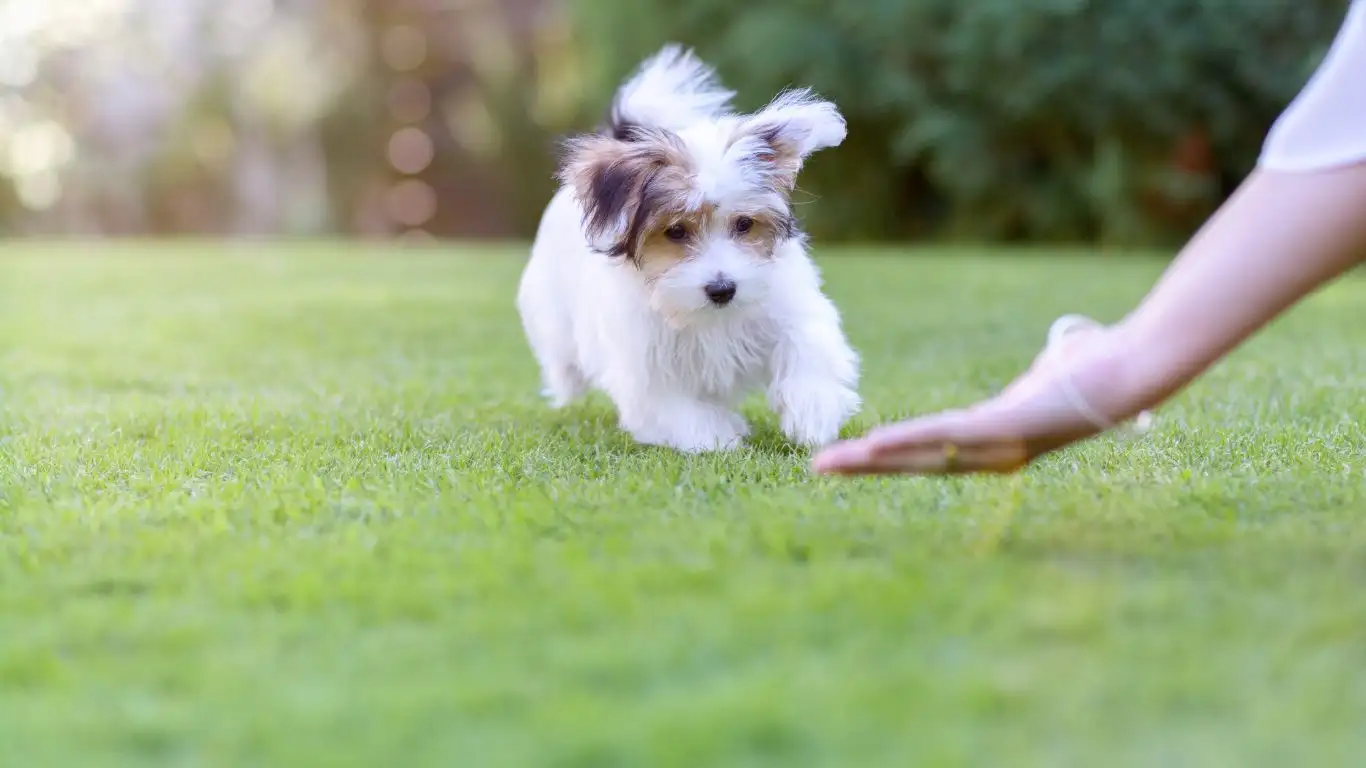
Before we dive into the “how,” let’s talk about the “why.” Most of the time, dogs that overreact when meeting new dogs aren’t trying to be aggressive—they’re either super excited, unsure, or feeling a little anxious. Think of it like this: imagine if every time you saw someone new, they sprinted up to you yelling and hugging you. Even if they meant well, it’d be a bit much, right? Dogs feel the same way.
Now, in therapy training, we emphasize neutrality. That means dogs are taught to observe without reacting. But you don’t have to be training a service or therapy animal to benefit from this approach. Teaching your pup to stay calm when meeting others makes walks more enjoyable, safer, and frankly, a lot less embarrassing.
Step 1: Start Calm, Stay Calm
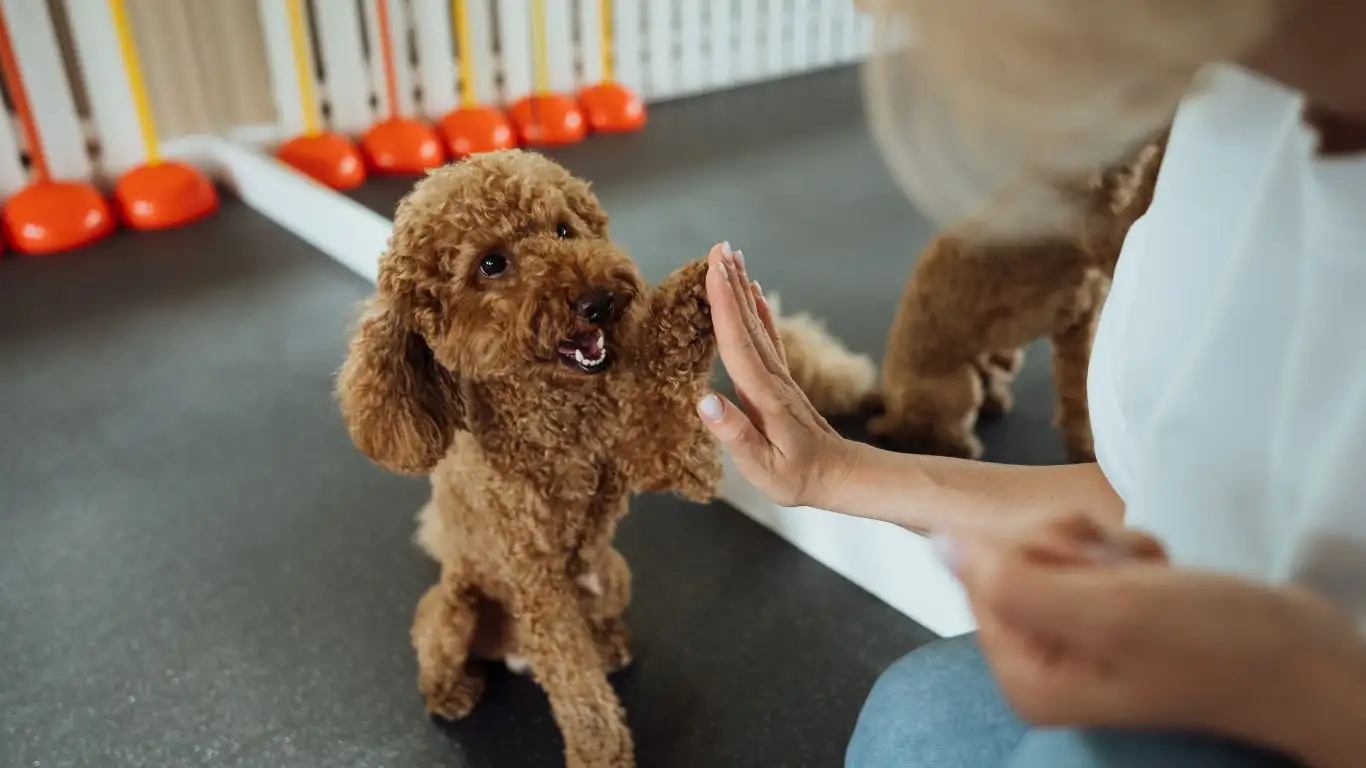
It All Begins at Home
Training calm behavior doesn’t start when you see another dog—it starts way before that. Like, back at home before the leash even goes on. If your dog’s already hyped when you’re grabbing your keys, that energy is going to carry all the way to the dog park.
- Practice putting on the leash calmly. If your dog jumps or spins, stop and wait until they’re still.
- Use a release cue like “Okay” to let them know when it’s time to head out.
- Before walking out the door, ask for a simple command like “sit” or “watch me” to set the tone.
Trust me—when you take time to reset that pre-walk excitement, it’s a game-changer.
Distance Is Your Friend
Here’s one thing I always teach new clients: don’t rush the close-up. If your dog loses it when another dog is within sniffing distance, you need to create what I call a “safe learning bubble.”
- Find a spot with decent visibility—like a trail or a big park.
- Keep your dog at a distance where they can see another dog but not react.
- Every time they look at the other dog and stay calm? Reward that behavior like it’s gold. Treats, praise, even a quick play session if they’re toy-motivated.
One of my past trainees, Max (a goofy lab mix), used to bark his head off at any dog within 20 feet. But when we worked with space and slowly closed that distance, his confidence grew. Within a few weeks, he could walk calmly beside a group class with his tail wagging and his mouth soft. No more barking, no more drama.
Step 2: Teach a Go-To Behavior
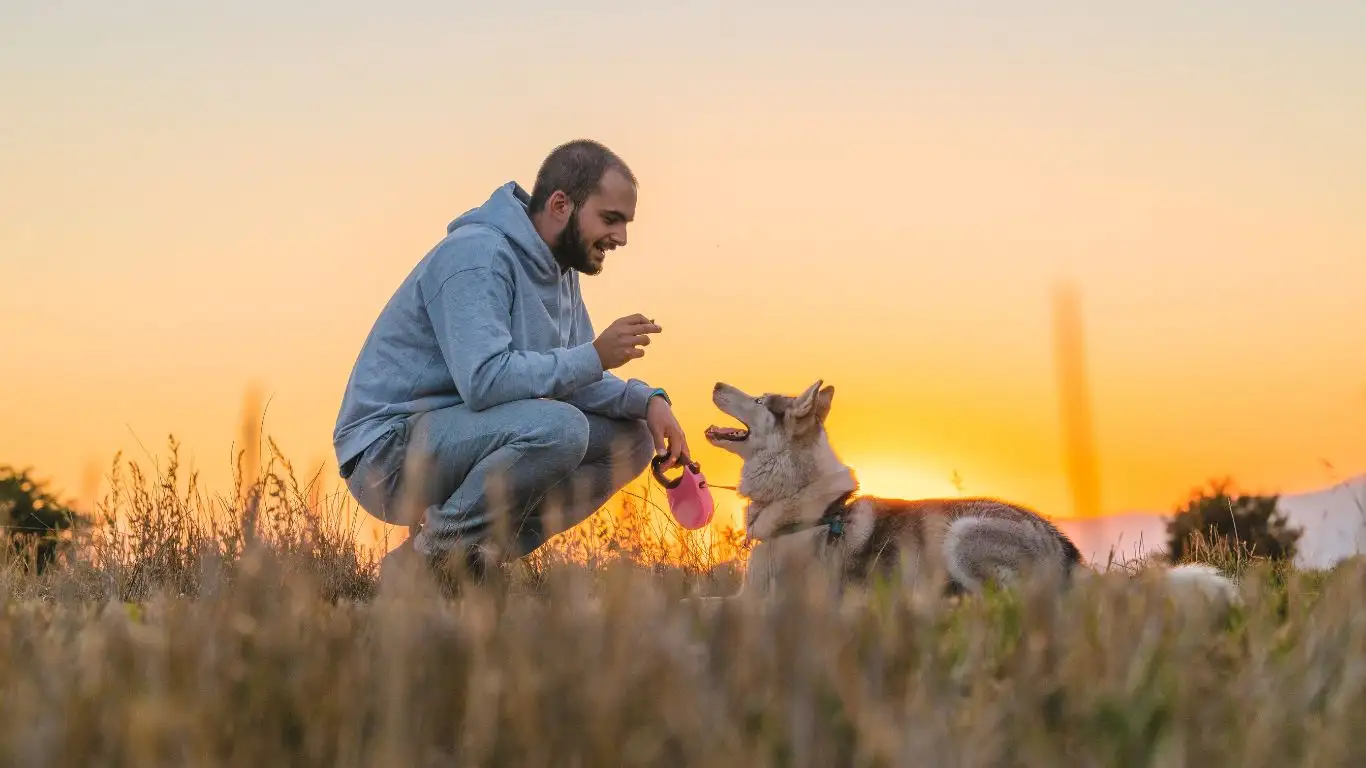
Focus Is Everything
One of the most powerful tools in your training toolkit is a reliable “watch me” command. I use this constantly with therapy dogs-in-training, and it works wonders when you’re walking past other dogs. You’re basically teaching your pup that you are more interesting than that big hairy distraction across the street.
- Start inside with no distractions. Hold a treat near your face and say “watch me.” When your dog makes eye contact, reward immediately.
- Gradually practice in more distracting environments—your yard, your driveway, then a quiet sidewalk.
- Once they’re solid, use it as your go-to move when another dog appears.
It’s not about demanding your dog ignore the world—it’s about building a connection where they check in with you naturally. I had a golden retriever in training who’d practically lock eyes with me whenever she saw another dog. Why? Because she knew something good was coming from me if she stayed calm.
Practice “Say Hi” the Right Way
This part’s tricky because, let’s be honest, not every dog wants to be best friends. But if you do want your dog to greet others calmly, it needs to be on your terms.
- Ask for a calm sit before letting your dog greet another.
- Keep the leash loose. Tension on the leash can signal stress or trigger pulling.
- Keep the interaction short—just a few seconds at first. Think: quick sniff, happy tail, and move on.
If things go well, praise and reward. If it doesn’t feel right, don’t force it. Just like us, some dogs don’t vibe, and that’s okay.
Stay Tuned for More Real-Life Training Tips
So far, we’ve laid the groundwork—understanding the “why” behind overreactions and teaching your dog the basics of staying calm during dog-to-dog meetups. And honestly? These simple steps make a massive difference. Whether you’ve got a nervous pup or an overly enthusiastic greeter, these tools help create structure, reduce stress, and build trust between you and your dog.
Step 3: Exposure Done Right
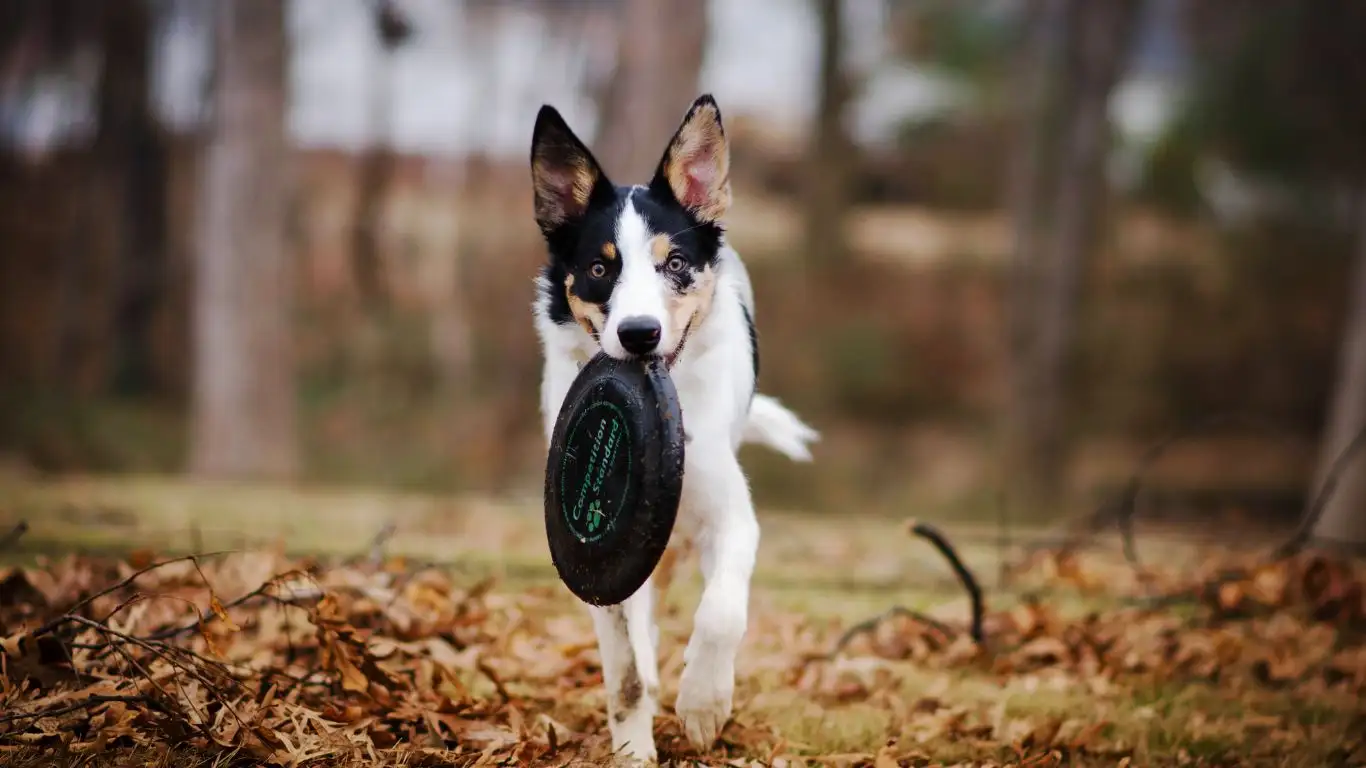
Here’s the thing I wish more dog parents knew: not all exposure is good exposure. Tossing your pup into a chaotic dog park hoping they’ll “figure it out” is like expecting someone to learn to swim by jumping off a dock. I’ve seen so many well-meaning folks unintentionally set their dogs back this way. Instead, controlled, positive exposure is the name of the game.
When I was working with a young border collie named Luna, she was reactive but smart as a whip. We created calm, low-stress setups with trusted dogs in familiar areas. No off-leash chaos, no overstimulation. Just short, structured walks side by side—what I like to call “parallel hangs.”
How to Set Up a Parallel Walk
- Find a calm walking buddy—another dog and human duo you trust.
- Start with some distance between the dogs. Don’t force interaction.
- Keep both dogs moving in the same direction. Forward motion reduces tension.
- As they relax, slowly close the distance over multiple sessions.
The goal here isn’t instant friendship—it’s neutral companionship. If they can walk near each other without losing their minds, that’s a win. You’re reinforcing the idea that other dogs don’t mean chaos. They’re just… background noise.
Step 4: Reinforce Calm in Real-Life Situations
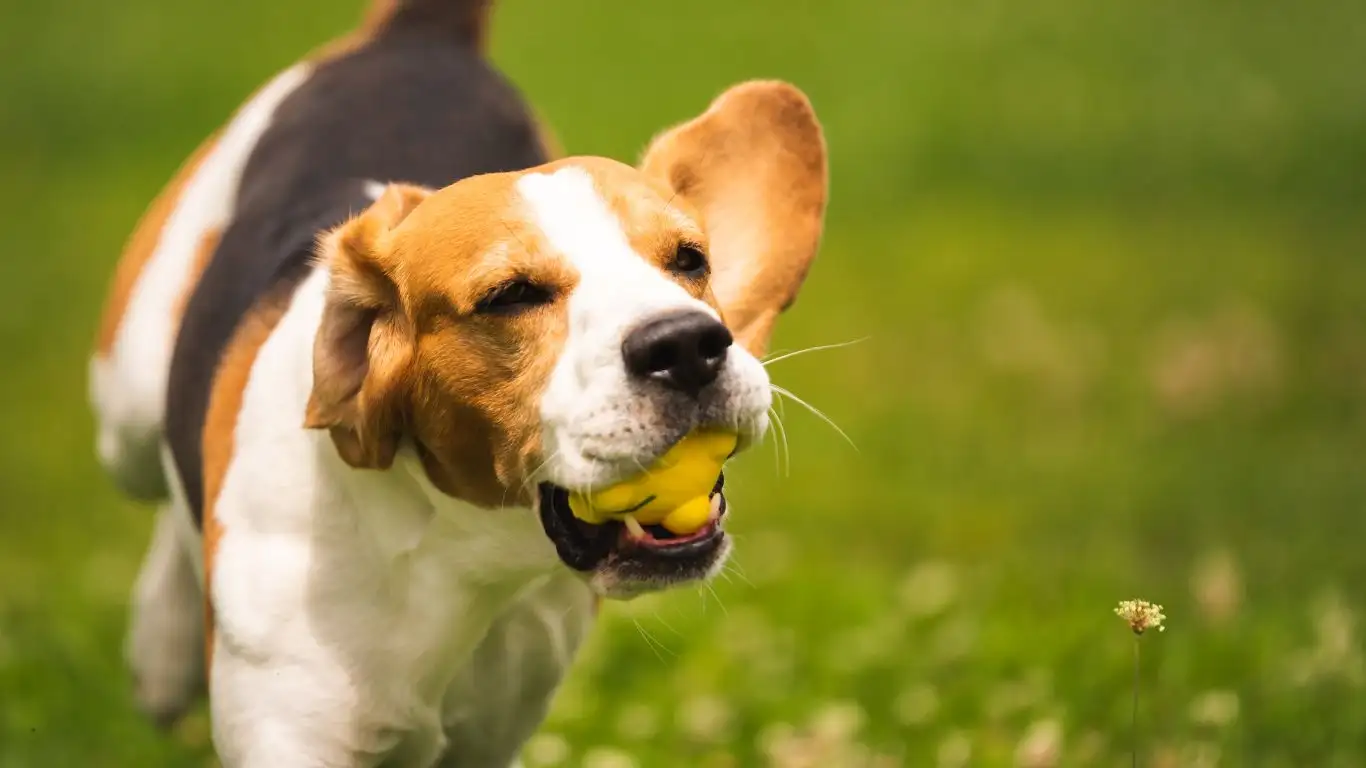
Let’s talk real life. Not every interaction is going to be as clean and choreographed as a training session. Sometimes you’re halfway through your coffee and suddenly there’s a doodle trotting your way, leash dragging, while the owner yells “He’s friendly!” (We’ve all been there.)
That’s why I always stress to my clients—and this is based on lots of field experience with therapy dog candidates—proofing your dog’s calm skills in different environments is crucial.
Practice Makes (Almost) Perfect
- Set up “training field trips” to places with light dog traffic—pet stores, walking paths, even pet-friendly cafés.
- Bring high-value treats and watch your dog’s body language closely.
- Reward before a reaction happens. Catching them being calm is the magic moment.
One golden retriever I worked with, Molly, used to tremble at the sight of other dogs. But we started visiting a quiet coffee shop patio on weekday mornings—far less traffic, way more control. Within a couple of weeks, she was laying at her handler’s feet, watching dogs pass by with nothing more than a calm glance. That kind of progress builds confidence, in the dog and the human.
Step 5: Know When to Step In—and Step Back
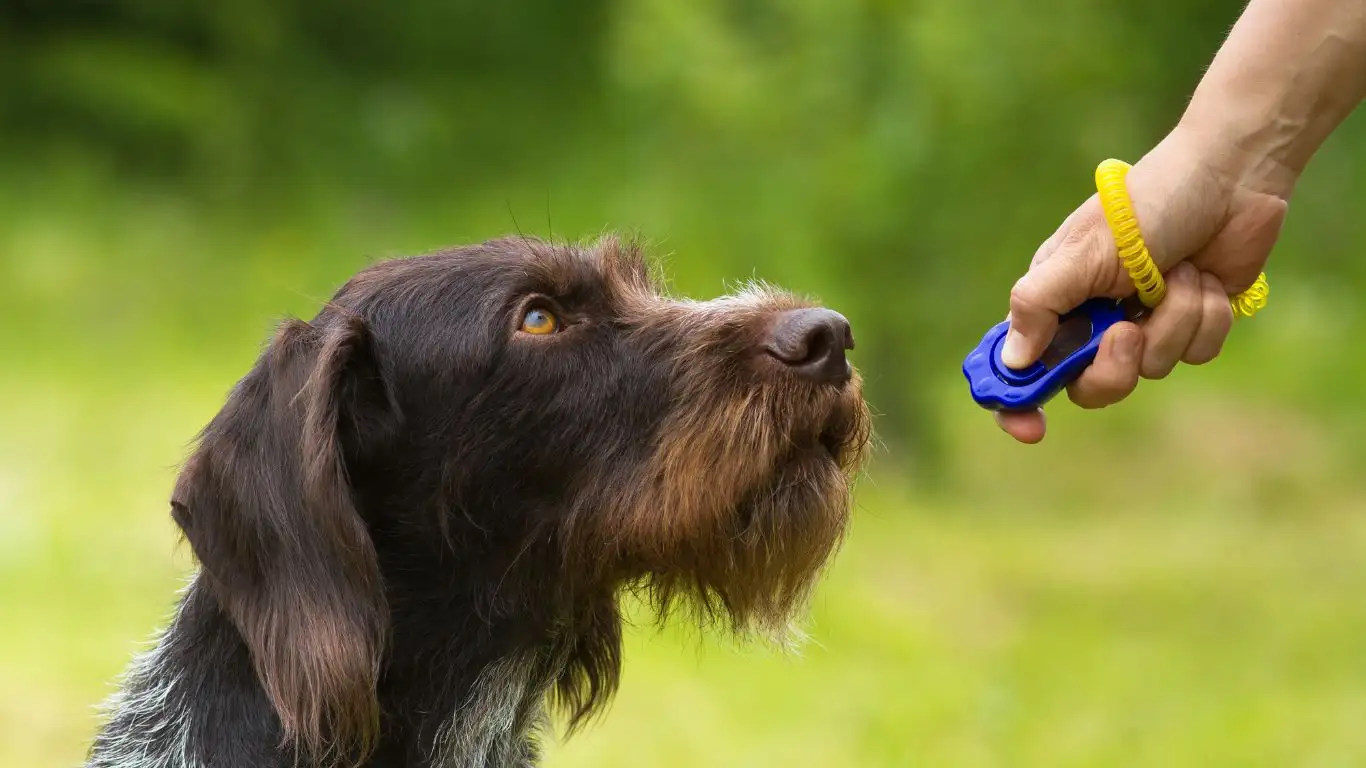
This might be the hardest lesson for dog owners (and sometimes even trainers): it’s okay to not let every interaction happen. You’re allowed to say “not today” and walk away. Your dog’s mental state matters more than any polite sidewalk greeting.
Sometimes, the bravest and kindest thing you can do for your dog is create space. Cross the street. Turn around. Step between them and a rude off-leash greeter. That’s not failure—it’s advocacy.
Red Flags That Your Dog Needs a Break
- Whale eyes (you can see the whites of their eyes)
- Pinned ears or stiff body posture
- Constant scanning or licking lips
- Unusual silence or sudden stillness before reacting
These are all signs I watch for during therapy assessments. If I see a dog showing subtle signs of stress, I don’t push for more. I pause, reset, or end the session. Calm behavior isn’t just about obedience—it’s about emotional regulation, and that takes time and respect to build.
Building Confidence Through Consistency
The secret sauce to how to train a dog to stay calm when meeting new dogs? It’s not just treats or perfect timing. It’s consistency. Calm greetings and emotional balance become second nature when your dog sees the same expectations and support from you, every single time.
Think about it like teaching a kid to shake hands politely. You don’t yell at them every time they get it wrong—you guide, model, and repeat until it clicks. Dogs are no different. They thrive on repetition and clarity.
One of the best compliments I ever got was from a client whose dog had gone from leash-reactive to a therapy dog certified for hospital visits. She said, “You didn’t just train my dog—you trained me to listen better.” And honestly? That’s the heart of it. This process changes both ends of the leash.
Step 6: Handling Setbacks—It’s Normal!
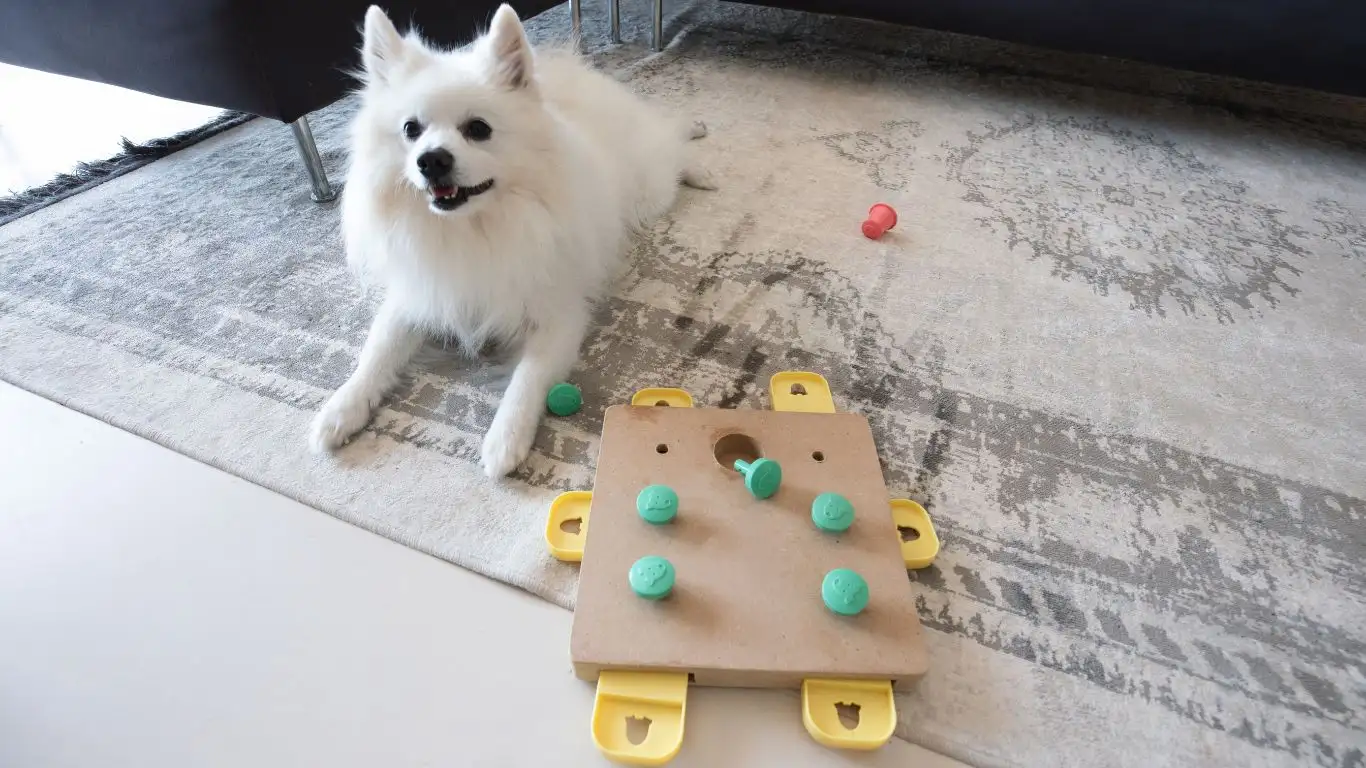
Here’s a little secret: setbacks are part of the process. It’s natural for dogs to have off days. Maybe they had a rough night of sleep, or the other dog they met wasn’t as friendly as they seemed. As much as we want to see consistent progress, every dog is unique. Some days, it may feel like you’re back to square one, and that’s okay.
In fact, I always tell my clients that a setback doesn’t mean failure—it’s just a moment for us to reassess. I’ve had dogs like Daisy, a shy husky, who made huge strides in the beginning, only to regress when she encountered an overly excited pit bull during a walk. But that setback gave us the chance to work on her triggers more specifically, helping her feel safe while learning to cope with excitement around other dogs.
When a Setback Happens
- Don’t punish your dog. Remember, reactivity often comes from stress or fear.
- Take a step back and give your dog space. If you pushed too hard, try again with a lower level of distraction.
- Use it as a learning opportunity for both of you. Adjust your approach, whether it’s distance, reward systems, or calming techniques.
When setbacks occur, remind yourself that your dog is still learning. And just like any other skill, it takes practice, patience, and time to build the foundation you want.
Step 7: Mind Your Own Energy
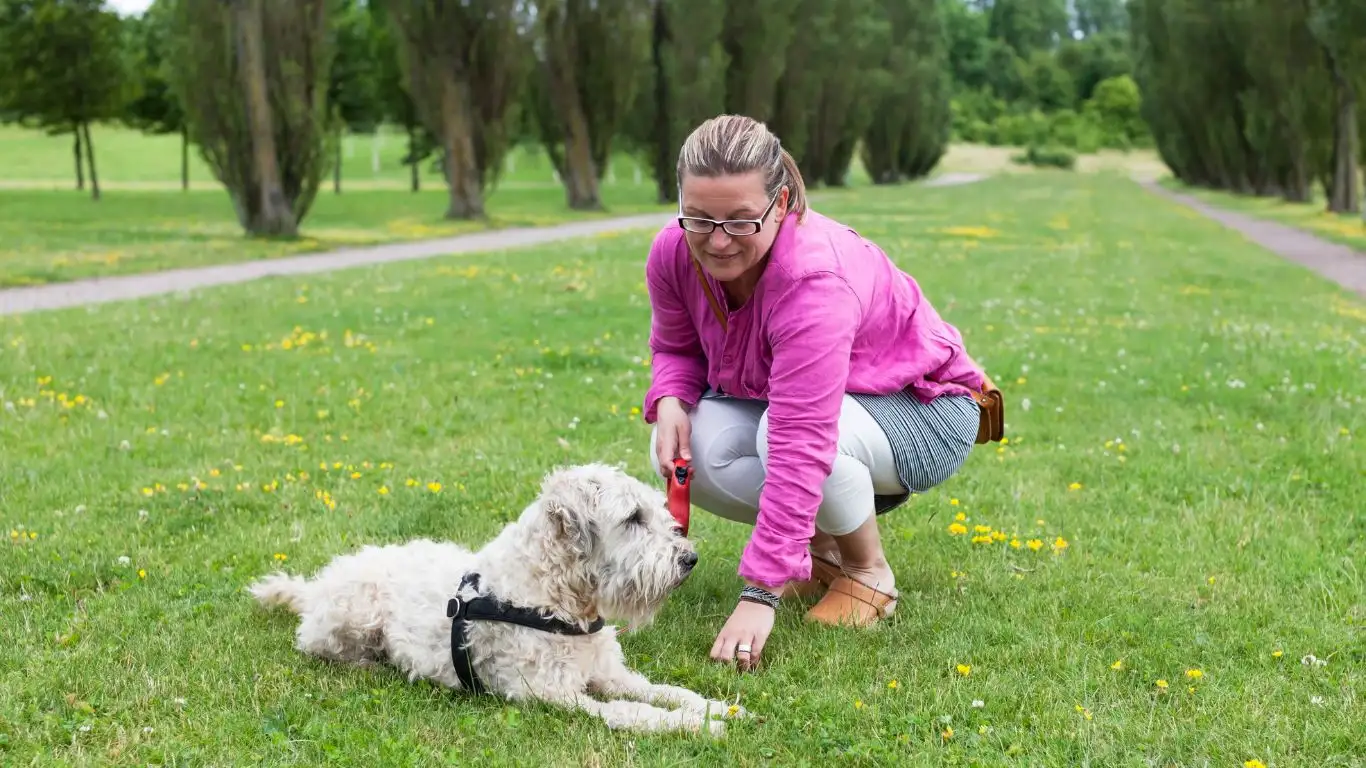
This is one of the most important but often overlooked aspects of dog training: your energy matters. If you’re feeling anxious, tense, or stressed, your dog will pick up on that. Dogs are amazing at reading our body language and emotions, and they tend to mirror what they sense. If you’re nervous every time another dog approaches, your dog will likely feel nervous, too.
I always tell clients to take a deep breath and stay calm, even if your dog is acting like a wild child. I remember working with a particularly excitable terrier named Benny. He’d jump, bark, and pull every time he saw another dog. His handler was also super anxious because of Benny’s behavior, which only made things worse. The breakthrough came when she learned to manage her own energy first—by taking slow, deliberate breaths and relaxing her posture. Benny’s behavior followed suit, and over time, he started to feel safer and more confident around other dogs.
How to Manage Your Energy
- Pause, breathe, and relax. Your calm will directly influence your dog.
- Keep your leash loose. Tension on the leash can create tension in both you and your dog.
- Use a calm, confident voice to give commands or redirection. Dogs respond better to a steady, reassuring tone.
The next time you’re out walking and another dog approaches, try to focus on your own breathing. Ground yourself in the moment, and see how your dog responds. It’s amazing what a little mindful presence can do for your dog’s confidence.
Step 8: Building a Consistent Routine
Dogs thrive on routine. This is something that every dog trainer will tell you—whether you’re working with a service dog, a therapy dog, or just a regular pup. When dogs know what to expect, they feel safer and more secure. This is crucial when training them to stay calm in new situations, like meeting new dogs.
Set regular walks, training sessions, and playtime, and make sure to incorporate positive reinforcement at every opportunity. Predictable routines help your dog stay in a calm and confident mindset. I’ve had plenty of dogs make huge improvements just by sticking to a consistent schedule. It makes them feel like they can trust their surroundings and what’s expected of them.
Routine Tips
- Feed your dog at the same time each day to create a predictable structure.
- Incorporate training into your daily walks. A few minutes of focus work can go a long way.
- Give your dog time to unwind before bed. A calm bedtime routine sets them up for a more peaceful next day.
The more consistent you are with routines, the quicker your dog will learn to adjust and stay calm in new situations. It’s like building muscle memory. Over time, your dog will know what to expect and how to handle it.
References and Resources
For more insights into dog behavior and training, check out these reputable sources:
Disclaimer
The information in this article is based on my personal experiences as a Canine-Assisted Therapy Trainer and is meant for general informational purposes. Always consult a professional trainer or veterinarian if you’re unsure about your dog’s behavior or health. Every dog is unique, and training methods should be adapted to suit individual needs.
